By Sara Hoskins
Bioluminescence is a widespread evolutionary trait that sea creatures have adapted. The existence of bioluminescent organisms spans from the surface of the ocean to the deep sea. Organisms with bioluminescent characteristics inhabit a vast range of climates and geographic locations. In Bioluminescence of the Sea scientists Haddock, Moline, and Case estimate that bioluminescence has evolved a minimum of 40 times, but most likely has evolved over 50 times. This indicates the necessity and ease of bioluminescent evolution (447). The Anomalops katoptron, more commonly known as the splitfin flashlight fish, is a creature that exemplifies the diversity of bioluminescent evolution as it lives in tropical locations, shallow waters, and near coral reefs, and also has several bioluminescent functions including vision enhancement, feeding, and communication.
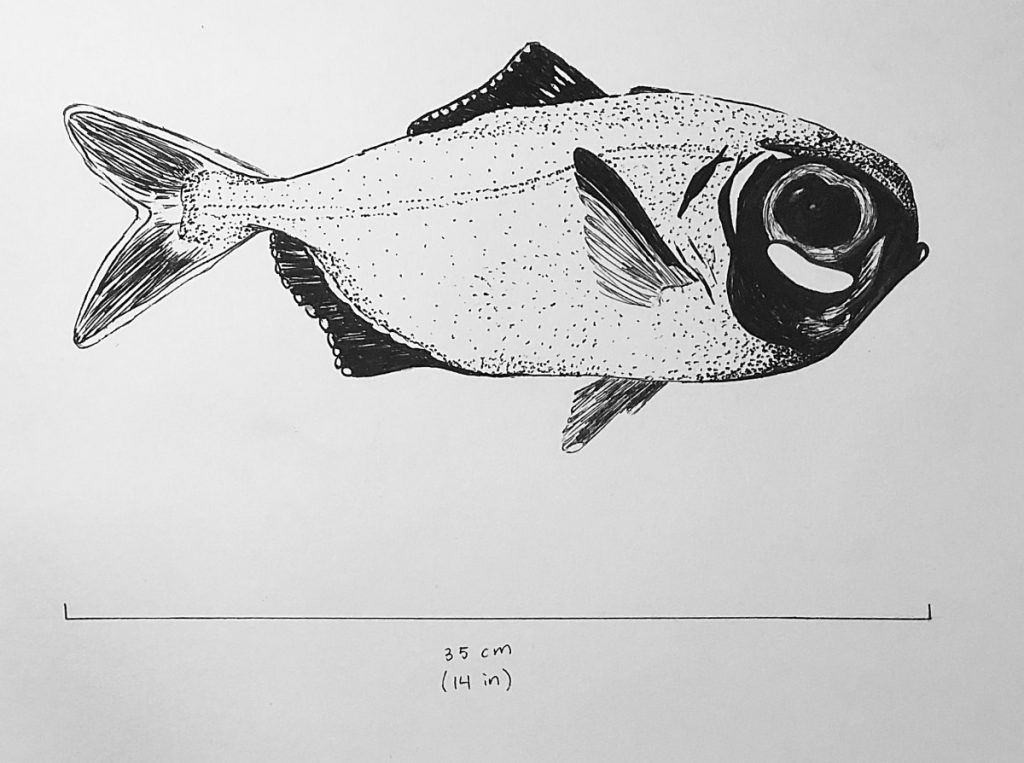
The splitfin flashlight fish is a nocturnal species that lives in shallow waters near coral reefs. Although the reef dwelling splitfin flashlight fish lives in an environment subject to light, it has the capability of flashing its bioluminescent organ in the dark of night. The fish uses its bioluminescence to enhance its vision. Like many other fish, the splitfin flashlight fish has an eye that contains a cornea, iris, lens, retina, and optical nerve. Splitfin flashlight fish also have a tapetum lucidum which reflects light that enters the eye. The results of this reflection can be seen near the iris’ of the fish’s eyes where a thin ring-like shape glows.
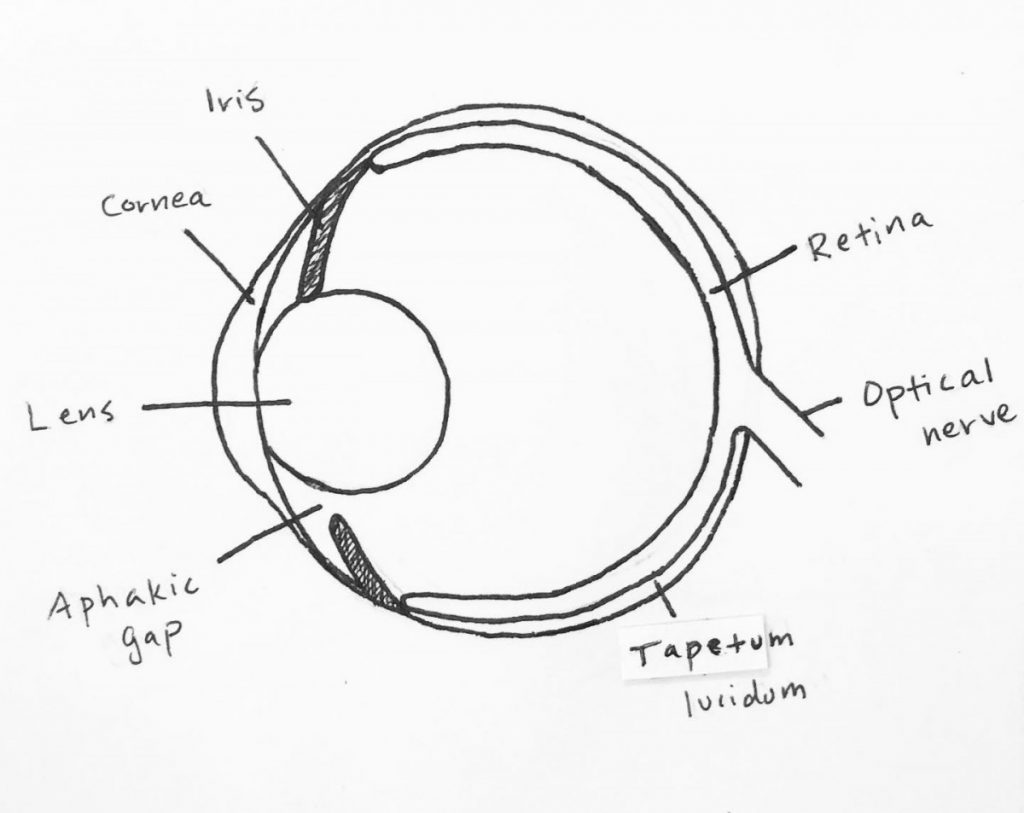
The splitfin flashlight fish’s bioluminescent organs are located beneath its eyes. Bioluminescence is generated by a chemical reaction. The energy that is released from the oxidation of a light emitting luciferin creates the bioluminescent properties. The splitfin flashlight fish has a continuous bacterial reaction, but the light emitted can be increased or decreased by opening and closing tubules that exist within the bioluminescent organ. Consequently, the organ appears larger when bioluminescent light is being emitted.
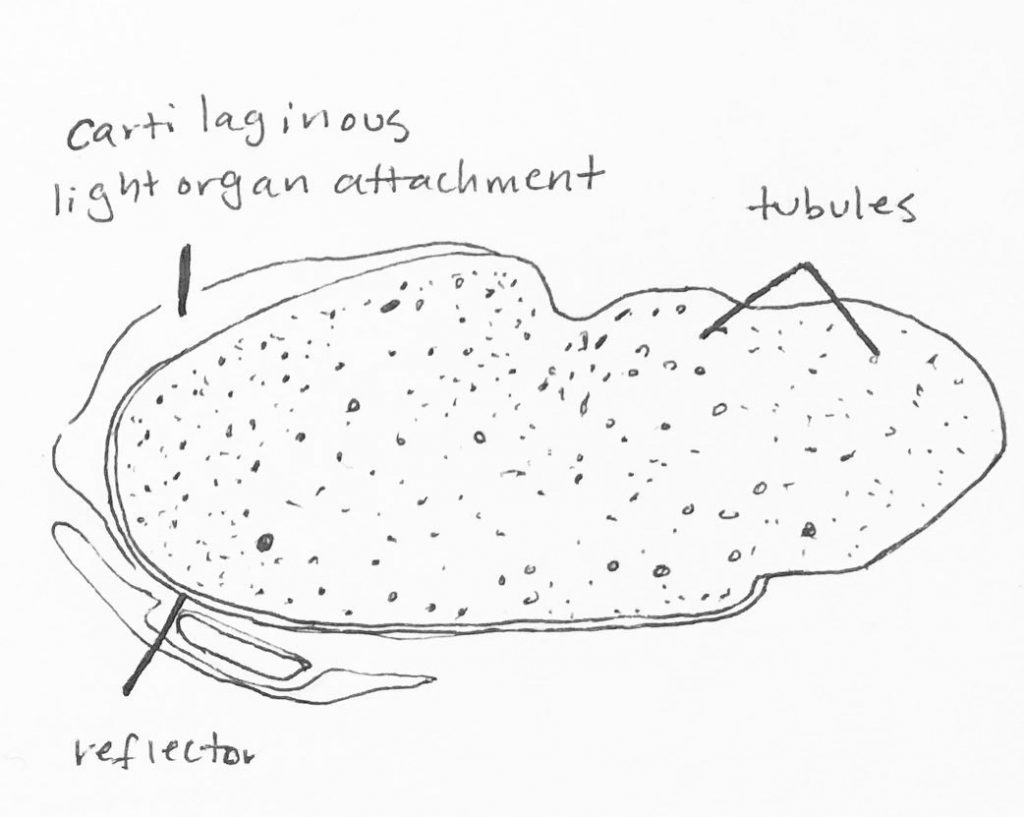
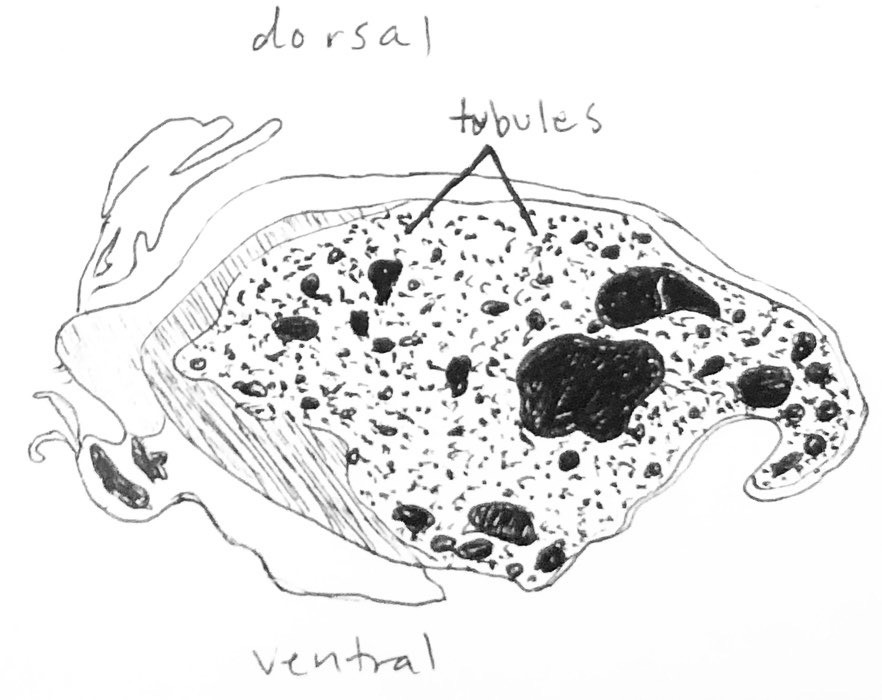
The splitfin flashlight fish can flash up to 90 blinks per minute. There is a correlation between the absence or decrease in blinking and the presence of zooplankton. This means that the fish uses bioluminescent illumination to see prey. When the splitfin flashlight fish detects its prey, its light organs open for longer periods of time and blink 5 times less frequently than when there are no zooplankton in the area.
The splitfin flashlight fish is a schooling fish that utilizes its bioluminescence to swim within its school at night, a quality that is rare of schooling fish in shallow waters. A simulation designed by PLOS scientists “demonstrated that school motion synchrony [of Anomalops katoptron] exhibits correlation with relative swim speed”. Furthermore, the simulation discovered that only a small portion of fish had to exhibit this bioluminescent flashing in order to maintain schooling cohesion. The communicative nature of bioluminescence in flashlight fish presents an additional ecological implementation to marine bioluminescence. It suggests that “schooling behavior in mesopelagic bioluminescent fishes may be also mediated by luminescent displays” (Gruber).
While the flashing has been linked to guiding and maintaining the school of fish, the function of the rapid speed of flashing that these fish are capable of is still in question. Some scientists speculate the vision enhancement that the rapid flashing provides, while others question if the blinking is more of a limitation. Whether the flashing enhances or limits the splitfin flashlight fish, it is a part of its essential functions as a nocturnal species. Similar to the way humans don’t normally register their own blinking patterns, for the flashlight fish, this bioluminescent display is natural and common.
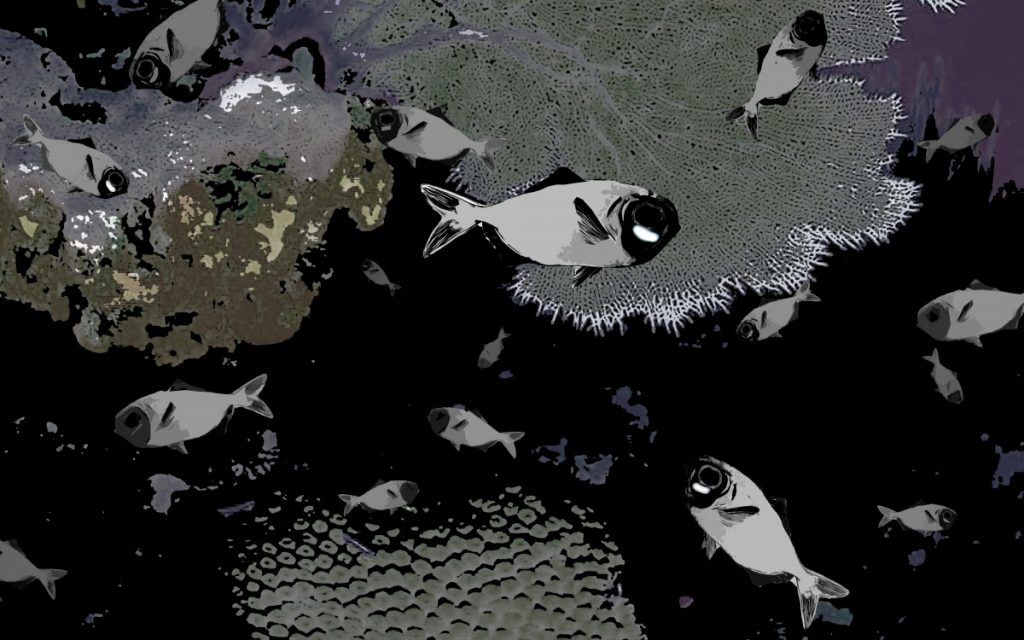
This animation supports the overall vision study of the reef dwelling splitfin flashlight fish. The pattern that a school of flashlight fish produces is represented artistically through animation. The pattern work is intended to bridge the gap between digital simulations of the bioluminescent flashing, and viewing the school’s flashing in-person and through videos. A brief description of the species, as well as anatomies of the bioluminescent organ and eye organ are included in the animation, but elaborated on further in the writing of this post.
References
Gruber, D. F., Phillips, B. T., O’Brien, R., Boominathan, V., Veeraraghavan, A., Vasan, G., …
Sparks, J. S. (n.d.). Bioluminescent flashes drive nighttime schooling behavior and synchronized swimming dynamics in flashlight fish. Retrieved from https://journals.plos.org/plosone/article?id=10.1371/journal.pone.0219852
Haddock, S. H. D. (1997). Bioluminescence in the deep-sea and open ocean: gelatinous
zooplankton and marine snow.
“The Bioluminescence Web Page.” The Bioluminescence Web Page, biolum.eemb.ucsb.edu/.
The Editors of Encyclopaedia Britannica. “Flashlight Fish.” Encyclopædia Britannica,
Encyclopædia Britannica, Inc., 4 Jan. 2018, www.britannica.com/animal/flashlight-fish.
